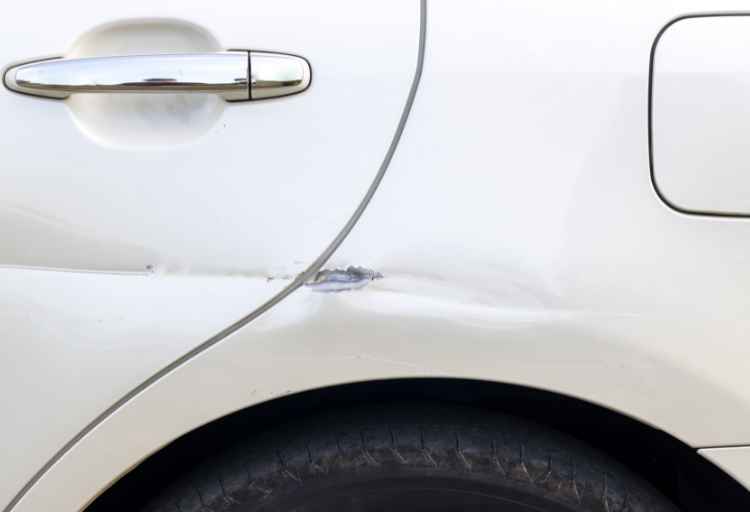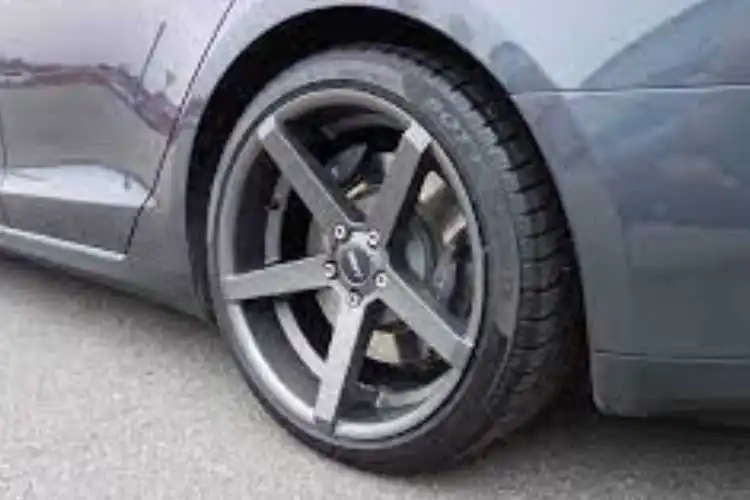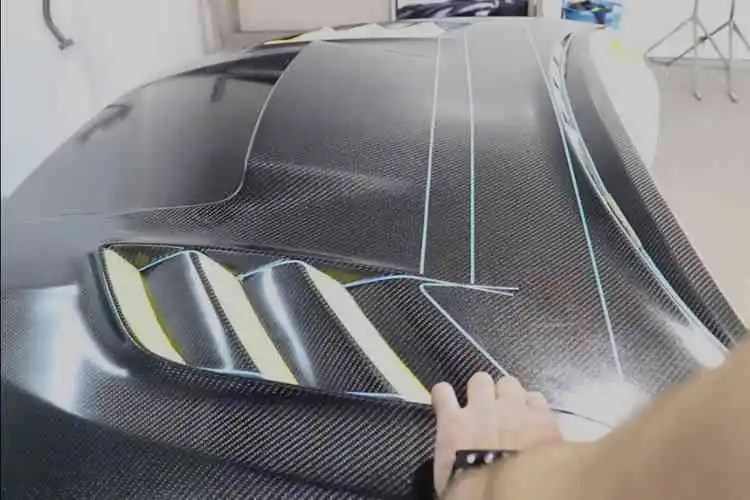Bondo Hair vs Bondo Glass
Automotive repair requires specialized products that can withstand the wear and tear of daily use.
Bondo, a popular brand of automotive repair products, offers two popular fillers: Bondo Hair and Bondo Glass.
These fillers are used to repair damaged surfaces of a vehicle, but they differ in their composition and usage.

What is Bondo Hair?
Bondo Hair is a filler that contains a mixture of short fiberglass strands and polyester resin. This mixture forms a strong and durable bond that is ideal for filling gaps, holes, and cracks.
The fiberglass strands make Bondo Hair an ideal choice for repairing rusted metal, fiberglass, and wood surfaces.
Bondo Hair is also resistant to water and chemicals, making it an ideal choice for repairing surfaces exposed to harsh environments.
What is Bondo Glass?
Bondo Glass is a filler that contains a mixture of short fiberglass strands and a specially formulated polyester resin.
The resin used in Bondo Glass is stronger and more durable than the resin used in Bondo Hair, making it an ideal choice for repairing surfaces that are exposed to high stress and impact.
Bondo Glass is ideal for repairing metal, fiberglass, and wood surfaces.
Bondo Hair vs Bondo Glass
a. Materials
The main difference between Bondo Hair and Bondo Glass is the composition of the materials used.
Bondo Hair contains a mixture of short fiberglass strands and polyester resin, while Bondo Glass contains a mixture of short fiberglass strands and a specially formulated polyester resin.
The resin used in Bondo Glass is stronger and more durable than the resin used in Bondo Hair, making Bondo Glass a better choice for repairing high-stress and impact areas.
b. Applications
Another significant difference between Bondo Hair and Bondo Glass is their applications. Bondo Hair is ideal for filling gaps, holes, and cracks in metal, fiberglass, and wood surfaces.
Bondo Hair is also resistant to water and chemicals, making it an ideal choice for repairing surfaces exposed to harsh environments.
Bondo Glass, on the other hand, is ideal for repairing surfaces that are exposed to high stress and impact, such as bumpers, hoods, and fenders.
c. Drying time
Bondo Hair and Bondo Glass also differ in their drying time. Bondo Hair has a shorter drying time than Bondo Glass, making it an ideal choice for quick repairs.
Bondo Hair dries in about 20 minutes, while Bondo Glass takes about 45 minutes to dry.
However, Bondo Glass is more durable and stronger than Bondo Hair, making it a better choice for long-term repairs.
d. Sanding
The sanding process for Bondo Hair and Bondo Glass also differs. Bondo Hair is easier to sand than Bondo Glass, making it an ideal choice for novice users.
Bondo Hair requires less sanding, and the sanding process is faster and smoother than Bondo Glass. Bondo
Bondo Glass:
Bondo Glass is a fiberglass-reinforced filler that is designed to repair holes, cracks, and dents in surfaces that are made of metal, wood, concrete, and fiberglass.
The product is known for its strength, durability, and resistance to water and weather. It can be used on both automotive and household surfaces and is commonly used for repairing car bodies, boats, and other fiberglass items.
Bondo Glass: Versatile and Easy-to-Apply
On the other end of the spectrum, Bondo Glass is designed for lighter-duty repair projects.
With its smaller fiberglass strands and easier mixing and application process, Bondo Glass is a convenient choice for addressing smaller rust spots, everyday repairs, and minor damages.
It’s particularly suitable for car owners seeking quick fixes with a quality finish.
Despite its focus on smaller repairs, Bondo Glass doesn’t compromise on durability. It’s formulated to offer lasting solutions for less extensive damage, providing waterproof protection and compatibility with various paints, primers, and fillers.
Whether you’re dealing with shattered fiberglass body parts or tiny rust holes, Bondo Glass offers a reliable and efficient solution.
Unlike Bondo Hair, Bondo Glass requires less effort during the sanding process, thanks to its finer formulation. This makes it an excellent choice for those who prioritize convenience and ease of application.
Advantages of Bondo Glass:
- Strength and durability – Bondo Glass is known for its exceptional strength and durability. It is reinforced with fiberglass fibers that make it resistant to cracking, chipping, and peeling.
- Water-resistant – Bondo Glass is designed to be water-resistant, which means that it will not break down or deteriorate when exposed to water or moisture. This makes it an ideal choice for repairing surfaces that are exposed to water, such as boats and outdoor furniture.
- Quick drying – Bondo Glass is quick-drying, which means that it can be sanded and painted within a short period. This is an advantage for those who need to complete their repairs quickly.
Disadvantages of Bondo Glass:
- Toxic fumes – Bondo Glass can emit toxic fumes when it is being mixed and applied. Therefore, it is important to use it in a well-ventilated area and wear appropriate protective gear.
- Hard to sand – Bondo Glass can be difficult to sand because it is very hard and does not sand easily. This means that it may take longer to achieve a smooth finish.
- Requires special handling – Bondo Glass requires special handling and preparation, which can make it more challenging for DIYers who are not familiar with the product.
Bondo Hair:
Bondo Hair is a filler that is designed to repair small dents, cracks, and holes in surfaces that are made of metal, wood, concrete, and fiberglass.
It is similar to Bondo Glass, but it is reinforced with short, interlocking fibers that are made of polyester material. This product is also commonly used for automotive and household repairs.
Bondo Hair: Reinforced Fiberglass for Robust Restoration
Bondo Hair is a long-strand reinforced fiberglass filler that’s built to withstand the demands of heavy-duty repair projects.
This product shines in tackling complex restoration tasks involving sizeable dents and extensive rust holes. With its long hair fiberglass strands, Bondo Hair is ideally suited for projects requiring deep repairs and substantial reinforcement.
One of the key advantages of Bondo Hair is its ability to handle challenging restoration scenarios, making it a go-to choice for expert detailers and professionals.
Whether you’re dealing with vintage car restorations or massive rust holes, Bondo Hair’s thick consistency and powerful bonding properties provide the necessary structural integrity for lasting repairs.
Despite its thicker formulation, Bondo Hair dries quickly when combined with a hardener, reducing the wait time between application and sanding.
However, it’s important to note that the increased thickness of Bondo Hair might necessitate additional effort when it comes to sanding and refining the repaired surface.
This trade-off is well worth it for projects requiring substantial reinforcement and durability.
Advantages of Bondo Hair:
- Easy to sand – Bondo Hair is easier to sand than Bondo Glass, which makes it an ideal choice for those who are new to using body fillers. It sands smoothly and quickly, which means that it can be used to achieve a professional-looking finish.
- Versatile – Bondo Hair can be used on a wide range of surfaces, including metal, wood, concrete, and fiberglass. This makes it a versatile product that can be used for many different types of repairs.
- Cost-effective – Bondo Hair is generally less expensive than Bondo Glass, which makes it a cost-effective choice for those who are working on a budget.
Disadvantages of Bondo Hair:
- Not as strong as Bondo Glass – Bondo Hair is not as strong as Bondo Glass and is not recommended for use on larger repairs or in areas exposed to extreme weather conditions.
- Longer drying time – Bondo Hair takes longer to dry than Bondo Glass, which means that repairs may take longer to complete.
- Not water-resistant – Bondo Hair is not water-resistant, which means that it may break down or deteriorate when exposed to water or moisture. This makes it less suitable for repairing surfaces that are exposed to water.
Choosing the Right Filler for Your Project
The decision between Bondo Hair and Bondo Glass ultimately boils down to the nature of your repair project and your specific requirements.
Bondo Hair
Bondo Hair is the heavyweight champion in the realm of auto body repair. It’s the ideal choice for professionals and expert detailers who are working on intricate restorations, dealing with significant rust holes, and repairing large dents.
Its long hair fiberglass strands and reinforced formulation provide the strength and durability needed for these demanding tasks.
Bondo Glass
Bondo Glass, on the other hand, is perfect for car owners who are looking for a quick, reliable fix for minor damages. It excels in addressing smaller rust spots, minor holes, and every day repairs.
With its user-friendly application process and compatibility with various finishes, Bondo Glass offers a hassle-free solution for those seeking efficient repairs with a professional touch.
Conclusion
Both Bondo Glass and Bondo Hair are excellent choices for repairing small dents, cracks, and holes in surfaces that are made of metal, wood, concrete, and fiberglass.
Bondo Glass is known for its exceptional strength and durability, as well as its water resistance, quick drying time, and versatility. However, it can be difficult to sand and requires special handling and preparation.



